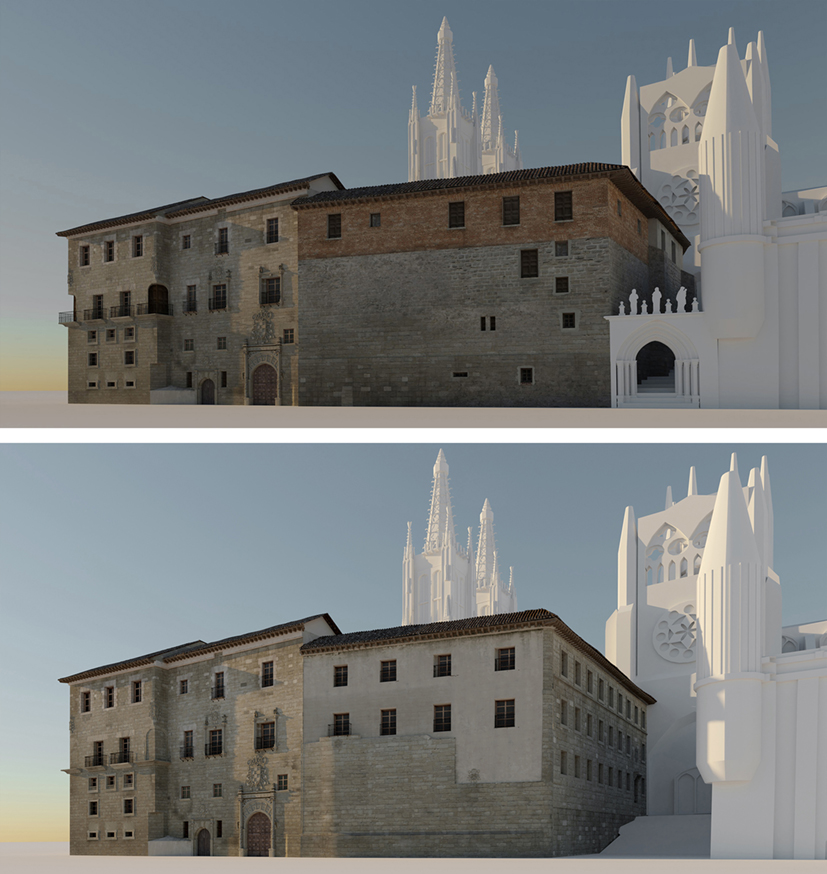
The Disappeared Archbishop’s Palace of Burgos: a grapic reconstruction.
Abstract
Disappeared heritage was always a subject of study through the traces that a building may leave of its existence. In the words of George Kubler, these traces became "signs" of a path that let us reconstruct the "fibrinous bundles" of the history of shapes and, thus, of the course of time.
Based on Rafael Moneo, we could analyse the lives of a building. But this analysis turns now far more operative, almost real, if, by means of the new information and communication technology tools, we are capable of reconstituting a three-dimensional model of a disappeared architecture.
The calamity of its disappearance implies now a lesser extent of loss, since the drawing, both economically and efficiently, can bring us back a part of the "graphical history" of the disappeared heritage.
This research focuses on the disappeared Episcopal Palace of the Cathedral of Burgos, a monumental complex belonging to the founding city of the Kingdom of Castile and declared World Heritage Site by UNESCO. The building, located in the southern side of the cathedral complex, suffered numerous demolition attempts since its medieval origin, finally being demolished in 1914.
Therefore, there are numerous graphic testimonies that have reached our hands, and now enable us to perform a virtual three-dimensional reconstitution which brings back a part of the life of the building, the so-called "graphical life" in a kind of virtual anastylosis, which, through computer-generated images, will help to make further progress in the still unresolved debate on the relevance of the conservation of heritage environments.
DOI: https://doi.org/10.20365/disegnarecon.27.2021.4
Keywords
Full Text:
PDFRefbacks
- There are currently no refbacks.
Copyright (c) 2021 Carazo, Moral, Alaguero
DISEGNARECON
ISSN 1828 5961
Registration at L'Aquila Law Court no 3/15 on 29th June, 2015.
Indexed in SCOPUS. Diamond Open Access. All papers are subjected to double blind peer review process by qualified reviewers.
Journal founded by Roberto Mingucci
